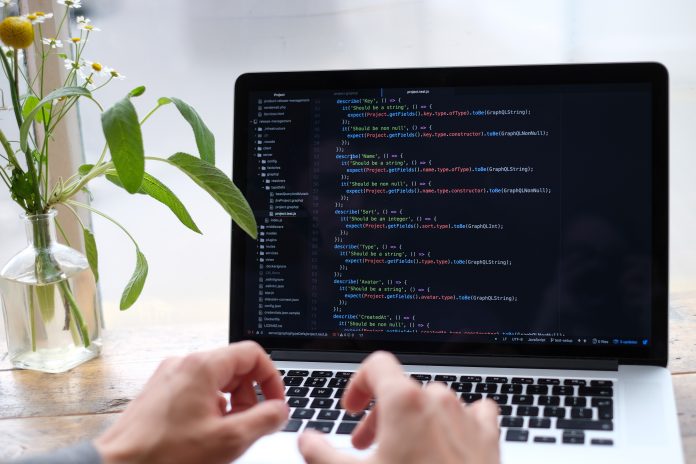These days, most businesses embrace a cross-platform development approach simply because of reaching out to a broader audience with a lower cost of development. By hiring a small team of developers versed with cross-platform technology, they can unleash their app on iOS and Android platforms.
Despite the crucial time and cost advantages of cross-platform development, this approach is now going through a rapid change thanks to technologies like Flutter. Through Flutter, you can develop fully native Android and native iOS apps. Moreover, flutter is not just about writing code once; run a top part of this code everywhere.
What’s so promising about Flutter? How are these promises of Flutter unfolding for an iPhone app development company? These are some of the key questions we would like to answer.
Flutter UI toolkit for natively compiled app projects
Suppose you go to the official website of Flutter. In that case, it is defined to be the UI toolkit developed by Google for creating visually stunning and natively compiled apps for multiple platforms such as iOS, Android, web, and desktop platforms by just using the same codebase.
Thanks to the native compilation of the code, Flutter offers fantastic performance and a smooth user experience for native iOS and native Android platforms. Since its first release back in 2017, Flutter has continued to get better with frequent updates and improvements coming on its way. Most of these updates were focused on enhancing the speed and performance of Flutter apps across all platforms.
Flutter for iOS app projects: a brief overview
Apple’s quest for a more innovation-friendly, type-safe, concise, and powerful coding language that gave birth to Swift coincided with the emergence of Flutter, the framework from Google that focused on delivering modularity by using a component-based development approach to unleash and extend scopes of innovations.
Apple replaced Objective-C with Swift back in 2014 to provide developers with a language with expressive syntax and concise and type-safe coding attributes. The speech was built as entirely compatible with the prevailing iOS APIs and Objective-C. Dart, the programming language used by Flutter, also offers similar declarative coding capability and concise and low-footprint code for better app performance.
It is already well known that despite the commotion around the cross-platform app development frameworks, they often turn out to be poorly performing and sluggish solutions challenging the stability of apps. This is where Flutter fulfilled the shortcomings of other cross-platform frameworks like React Native and Xamarin and ensured a more native-optimized performance and user experience.
In this respect, the effectiveness of Flutter needs to be understood in comparison to the native architecture. Dart programming language used by Flutter doesn’t need to depend on native widgets from the iOS operating system to access several different services such as camera, audio, sensors, etc. The Flutter vs. React Native comparison in delivering a native user experience becomes essential here.
React Native by using JavaScript bridge connects the widgets from the Original Equipment Manufacturer (OEM) to use the device and platform-specific features.
In complete contrast to React Native, which uses a JavaScript bridge to connect the native UI layer. Flutter comes with its repository of widgets that follow the Human Interface Design (HID) principles of Apple iOS. Flutter achieves the same user experience as the native iOS apps by rendering these widgets in the app. Because of using its gadgets and using renderer within the app, Flutter also ensures maintaining a consistent 60 FPS speed.
Updating Flutter widgets in an iOS app
To update the views on the iOS platform, the common practice is to mutate the arguments. But here’s a catch. Flutter widgets remain immutable and cannot be directly updated. So, to edit the widgets on iOS, developers need to tweak the state of the gadgets.
So here, the so-called differences between Stateful and Stateless widgets significantly impact. It can work like a stateless widget if the widget remains independent of everything except the primary configuration. Using stateless widgets gives you greater freedom to deploy them on the target platform. Text widgets are generally considered the most common stateless widget.
Thanks to the ease of creating stateless widgets with Flutter, you can quickly develop UI functions for iOS platforms. There will be several stateful widgets in the mix to transmit the preconceived business logic and condition over to the iOS platform. The versatility of the widget-based development approach without depending on the OEM widgets makes Flutter a far advanced development framework.
Building a Flutter module for the existing iOS app
Flutter framework can easily be embedded into any existing iOS app with ease. This requires creating a specific Flutter module for the iOS platform. Just use the correct directory to create a module, and from there, give the exact commands you usually present in other Flutter-based app projects.
The module can be evaluated through a consolidated view before the module is incorporated into your existing iOS app. This modular approach allows an iOS app to test the Flutter-based parts of the app from time to time.
As for embedding the Flutter module with an existing iOS app, you can install Flutter SDK by using the CocoaPods dependency manager. You can also build a separate framework involving the core Flutter engine, Dart code already compiled, and several Flutter plugins, incorporate the module within the framework, and update the app’s settings accordingly in Xcode.
Parting Words
So, using Flutter for native iOS developers has its way of setting things and advantages. For example, suppose you want to model your iOS app after an existing app built with Flutter. In that case, the technology can help you achieve the same or better app performance and user experience. Flutter coming from Google has gained popularity among many iOS developers now.



















